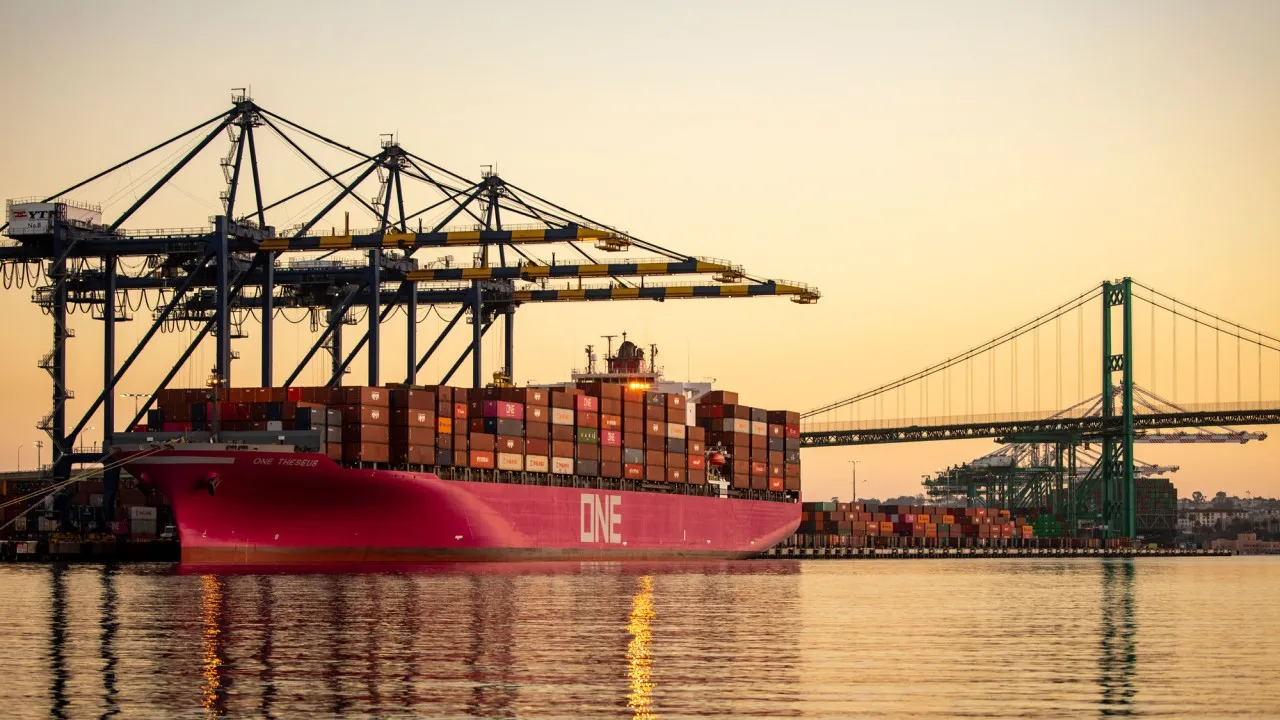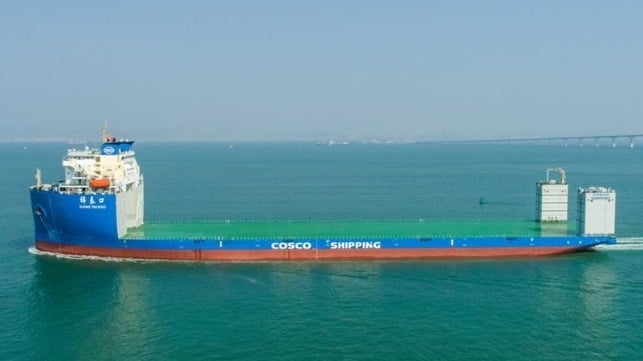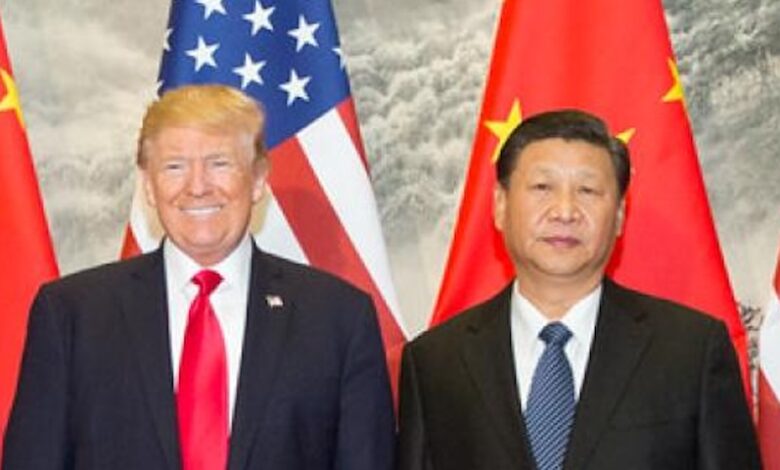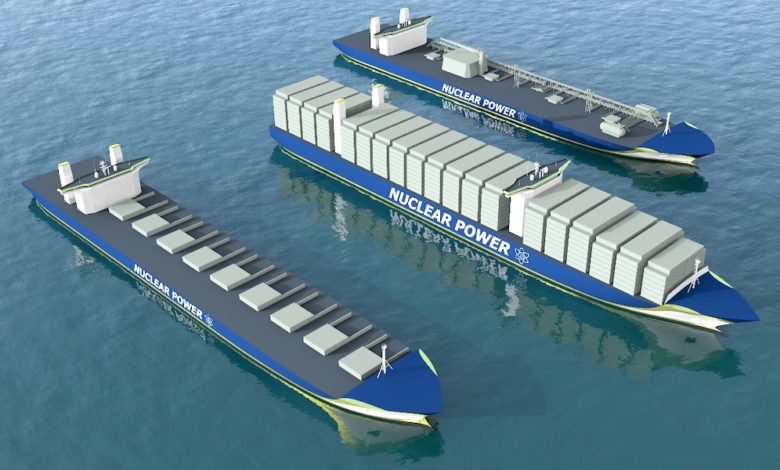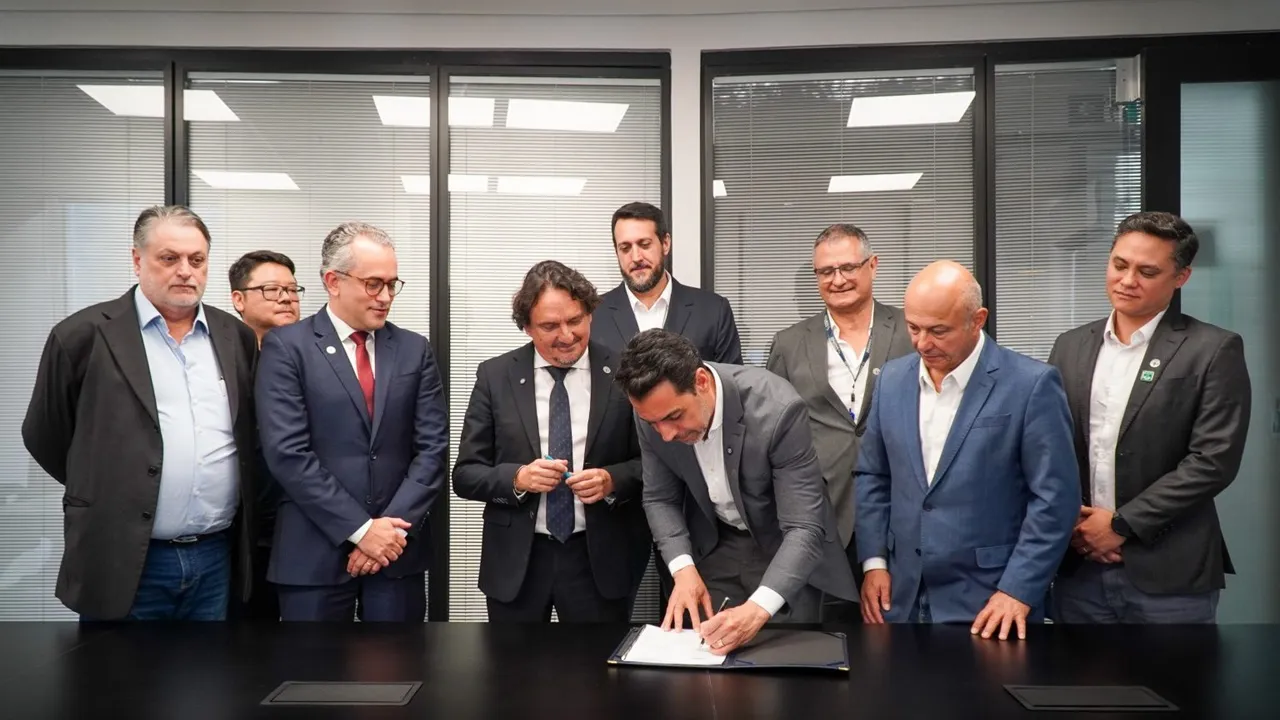Seatrade Maritime: USTR fees – just one China-built ship in Port of LA this week
As the United States Trade Representative (USTR) fees come into force this week the Port of Los Angeles (Port of LA) has just one Chinese built ship calling in the seven day period.
In his monthly briefing Port of LA Executive Director Gene Seroka commented on the impact of the USTR 301 charges for Chinese owned, built or operated ships calling at ports in the states that came into force on 14 October.
“On the ship side it’s a very complicated series of formulas that’s meant to assess the highest fee possible. For context here in Los Angeles just a little more of the 20% of the ships that called here were built in China or run by companies based there. To current events, this week we only have one ship that was built in China calling at the Port of Los Angeles,” Seroka explained.
According to its Port Optimizer Control Tower some 22 vessels are expected to call at the Port of LA in week of 12 – 18 October. The just one Chinese built vessel calling during the week would represent 4.5% of total calls compared to the 20% average seen in 2024.
The fees charged for Chinese owned and operated vessels are $50 per net tonnage (NT) from 14 October 2025 rising to $140 per NT in 2028. For Chinese-built vessels the fee from 14 October 2025 will be $18 per NT or $120 per container rising to $33 per NT or $250 per container in 2028. Fees are capped at five times per vessel, per year.
The port, which until September was experiencing record volumes, is facing multiple impacts from the US trade war with China, as well as the ongoing US government shutdown now in its 15th day, although so far the Port of LA is fully operational.
Commenting on events coming out of Federal Government in Washington DC Seroka said, “It’s been a whirlwind to say the least and I’m not sure there are calm winds just yet.”
On the tariff front this week sees wide ranging new tariffs implemented on goods from China including unupholstered furniture, heavy duty trucks, patented pharmaceuticals, and kitchen fixtures.
“The agriculture sector is bearing the brunt of the trade conflict and although there are discussions about a relief package that may not be a long-term solution,” he said.
The port handled 883,058 teu in September down 7.5% year-on-year although in Q3 as a whole it still racked up its best quarter on record handling 2.9 million teu.
“As we’ve reported for the last few months imports continue to outweigh American exports by a 4:1 ratio. This data reflects the real impact that ongoing trade negotiations are having on our ag [agricultural] sector.”
Looking at the coming weeks on the Port Optimizer Control Tower import volumes see a sharp drop in week 44 (26 October – 1 November) with 15 vessels scheduled to arrive with 76,129 teu of imports, compared to 22 vessels with around 115,000 teu of imports in the previous two weeks.
Related Posts

